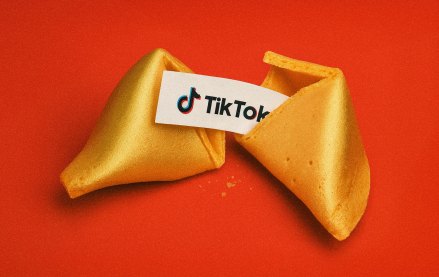Save 50% on a 3-month Digiday+ membership. Ends Dec 5.
‘This is the next chapter’: Bustle readies launch of tech news site Input
Bustle Digital Group is staking the next phase of its growth on an expansion into new verticals and plans to incorporate technology acquired this spring into the rest of its portfolio, as growth in the older parts of its portfolio begins to slow down.
In November, BDG will launch Input, a tech news site, bringing the total number of sites in its portfolio to eight, ranging from its female-focused flagship Bustle to the millennial news brand Elite Daily to the science-focused Inverse. (There is no firm day in place for Input’s launch because BDG is busy with discussions with advertisers over possible launch partnerships.)
Input, which site founder Joshua Topolsky began publicizing in January, will deliver staples such as device reviews and quick-hit news about tech and software companies — well-trod areas. The goal is to differentiate through voice and distinctive packaging, aided by design and format features originally built for Topolsky’s other site, The Outline.
Input is part of a new constellation of BDG-owned sites it calls the Culture and Innovation Collection, which BDG’s chief revenue officer, Jason Wagenheim, vowed would deliver “eight-figure” revenues in its first full year, while providing a template that the rest of the BDG portfolio could follow as the CMS and design technology that powered The Outline is folded into BDG’s proprietary content management system. The goal is to get the rest of BDG’s portfolio onto that by the summer of 2020, in an attempt to give each BDG site a distinctive look and feel while maximizing opportunities to distribute the branded content that drives BDG’s business.
“This is the next chapter for our company,” Wagenheim said. “We’re going to start to see a maturity in the growth for the core sites. This is where the hockey stick [growth] will continue.”
As falling display ad revenue rates and rising platforms have battered digital media, BDG CEO Bryan Goldberg has maintained that media can still be a good business for portfolio companies that share back-office resources, such as office space, tech and product and sales infrastructure.
In just the past 12 months, BDG has acquired five sites: Mic, Flavorpill, Inverse, Nylon and The Outline. The publisher’s older sites — Bustle, Romper, Elite Daily and Zoe Report — are each individually profitable, and that revenue is helping pay for investment in BDG’s tech and culture group, said Wagenheim.
Some acquisitions, such as Inverse, have been fit neatly into Bustle’s strategy, while others, such as Mic, remain a work in progress. Through the first eight months of this year, Mic’s traffic has slid slightly, from 2.6 million to 2.1 million monthly unique users, according to Comscore. The traffic to some of its other sites, such as Bustle, are also down over that same period, falling from 33 million to 28 million, also per Comscore. Over that same period, Bustle Digital Group’s overall audience has grown from 49 million to 57 million monthly unique users, per Comscore.
BDG’s bet is by bulking up it can compete with other multi-brand publishers, including Vox Media, which last week sealed a deal to acquire New York Media and its portfolio of seven brands. Goldberg, who has long predicted mass digital media consolidation driven in large part by the inefficiency of corporate services, tech and product, and sales teams, called last week’s news that Vox Media had acquired New York Media “good for the business.”
“Mergers like this one are precisely the correct move for the industry and lifts all boats,” Goldberg said.
The new technology is meant to help reduce BDG’s reliance on paid distribution for the branded content that drives most of the company’s business: Today, about 75% of BDG’s revenue comes from direct-sold advertising, 90% of which involves some branded content creation, Wagenheim said. BDG sells ads on a cost-per-view basis, distributing it using a combination of paid and organic social, as well as its own and partners owned and operated sites.
After years of focusing on women-focused lifestyle content, launching a new title focused on technology will allow BDG to compete for the budgets of a new collection of advertisers.
David Tucker, the head of strategy at the media agency Swellshark, said that BDG has turned into a frequent place to spend for clients in beauty, and said the group has done a good job in placing different messages on different titles. Some buyers think that the previous success they’ve had should help them grab more budgets from people they already have relationships with.
“I would give them the benefit of the doubt,” said Jen Mathis, svp and media director at Cramer-Krasselt. “Clients, in general, are more comfortable approving things they’re familiar with. To them, it’s not a bad thing to say, ‘We worked with these folks in the past; we trust their work, so let’s try something else.’”
More in Media

TikTok Shop sheds bargain-bin reputation as average prices climb across categories
An analysis by e-commerce intelligence firm Charm shows average prices climbing across more than a dozen key categories.

Ad Tech Briefing: The Programmatic Governance Council is a bid to reset power dynamics
As tensions over TID and GPID peak, Tech Lab is convening a council to hash out commercial ground rules.

Newsweek is building an AI Mode-like experience to customize homepages for readers
Newsweek is building an AI homepage modeled after Google’s AI Mode to increase engagement and offset declining search referrals.








